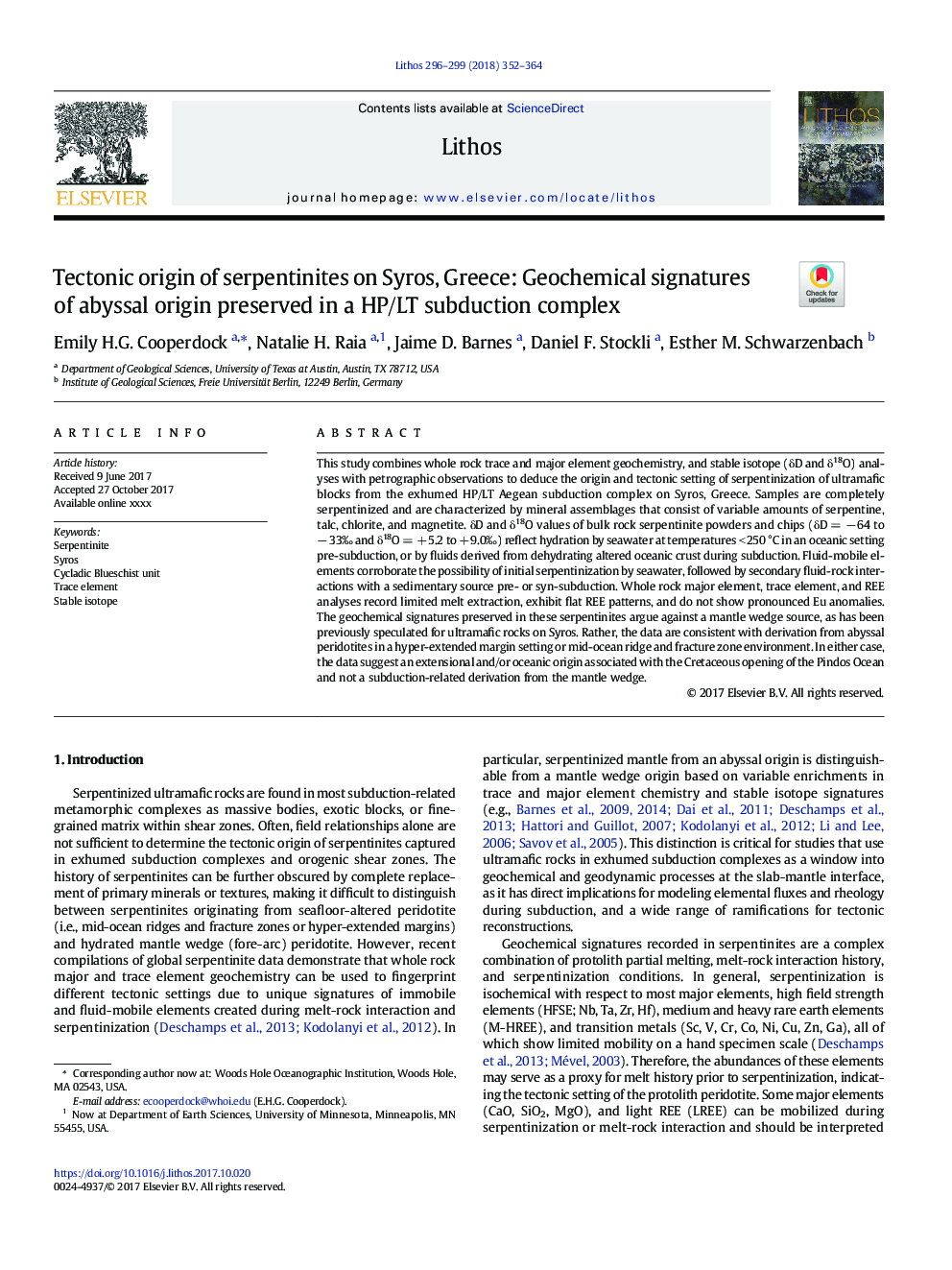| Article ID | Journal | Published Year | Pages | File Type |
|---|---|---|---|---|
| 8911812 | Lithos | 2018 | 13 Pages |
Abstract
This study combines whole rock trace and major element geochemistry, and stable isotope (δD and δ18O) analyses with petrographic observations to deduce the origin and tectonic setting of serpentinization of ultramafic blocks from the exhumed HP/LT Aegean subduction complex on Syros, Greece. Samples are completely serpentinized and are characterized by mineral assemblages that consist of variable amounts of serpentine, talc, chlorite, and magnetite. δD and δ18O values of bulk rock serpentinite powders and chips (δD = â 64 to â 33â° and δ18O = + 5.2 to + 9.0â°) reflect hydration by seawater at temperatures < 250 °C in an oceanic setting pre-subduction, or by fluids derived from dehydrating altered oceanic crust during subduction. Fluid-mobile elements corroborate the possibility of initial serpentinization by seawater, followed by secondary fluid-rock interactions with a sedimentary source pre- or syn-subduction. Whole rock major element, trace element, and REE analyses record limited melt extraction, exhibit flat REE patterns, and do not show pronounced Eu anomalies. The geochemical signatures preserved in these serpentinites argue against a mantle wedge source, as has been previously speculated for ultramafic rocks on Syros. Rather, the data are consistent with derivation from abyssal peridotites in a hyper-extended margin setting or mid-ocean ridge and fracture zone environment. In either case, the data suggest an extensional and/or oceanic origin associated with the Cretaceous opening of the Pindos Ocean and not a subduction-related derivation from the mantle wedge.
Related Topics
Physical Sciences and Engineering
Earth and Planetary Sciences
Geochemistry and Petrology
Authors
Emily H.G. Cooperdock, Natalie H. Raia, Jaime D. Barnes, Daniel F. Stockli, Esther M. Schwarzenbach,
